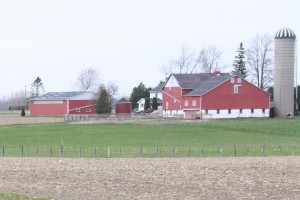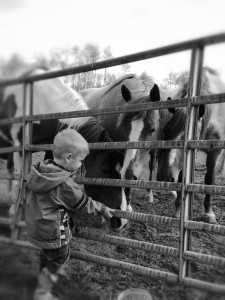By Kim Waalderbos
Agriculture is one of Canada’s best kept secrets, say dairy farmers Jim and Nancy Wert – until now.

For full details, and to reserve your FREE Breakfast on the Farm tickets. visit:
http://www.eventbrite.ca/e/ontarios-breakfast-on-the-farm-august-2014-tickets-11374855499
The Werts along with their four university-age sons are spreading that great secret and opening their barn doors. On Saturday, August 2, 2021 the family will host more than 2,000 visitors at their Stanlee Farms Inc. in Avonmore, Ont. for ‘Breakfast on the Farm’.
“We’re really looking forward to welcoming everyone,” says Jim, noting “the really great part is consumers get to talk to farmers first hand and ask questions”.
For the Wert family, a fifth generation of family farmers, their animals are top priority. Farm visitors will see many special features they’ve incorporated to ensure “the ladies” are comfortable and healthy. Their 110 milking cows are housed in a freestall barn, which means they are able to roam about the barn on their own schedule for feed, water or lay down. The milking cows can groom themselves on cow brushes, and have access to fresh air circulating thanks to a special ‘Cyclone’ fan. Jim and Nancy milk their cows twice a day in their milking parlour. On average, each cow produces 32 Litres of milk daily at the Werts’ farm.
The Werts’ heifers (younger female animals) are group housed in a ‘pack’ barn, where they have a large bedded area (pack) to lay down comfortably. Along their feed bunk is a slatted floor area to walk on. This allows manure to fall through to a pit below and keeps the animals’ feet clean and dry.
The youngest calves are also housed in groups, which enables lots of social interaction. Last year the Werts installed a robotic milk feeder. This means the calves can drink warm, fresh milk as often as they like throughout the day. “We really noticed how the older calves teach the younger calves where to get their milk, grain, hay and water,” says Nancy. “The calves really flourish in this environment.”

Jim and Nancy Wert along with their four sons will welcome visitors for a free breakfast & a farm tour on August 2, 2014.
The milking cows and oldest heifers are turned out on pasture in the warmer months. “It’s a psychological benefit for us, and we feel it helps keep the animals healthy,” says Jim. The Werts have 550 acres of land that they use for pasture, and to grow corn, soybeans, forages, barley for straw and specialty beans. “Most of what out animals eat is grown on farm,” Jim says.
The Werts feed a ‘Total Mixed Ration’ (TMR) to their animals. The TMR is a consistent mix of ingredients including corn silage (fermented corn), haylage (fermented grass), high moisture corn, minerals and sometimes soybeans. They work with a dairy nutritionist to make sure the TMR is balanced perfectly for animal needs.
For the past three years, the Werts’ milking cows have also been fed a special Omega-3 supplement. The cows are able to optimize this supplement in their four-compartment rumens (stomach) and produce milk with Omega-3 essential fatty acid benefits for consumers.
The Wert family raises Holsteins, a black and white breed of dairy animals. They’re also certified in the Canadian Quality Milk program.
At Breakfast on the Farm, the Wert family is keen to answer questions and show visitors around. “We feel we represent your typical Canadian dairy farm,” says Jim.
As a bonus, visitors at Breakfast on the Farm can meet farmers from other sectors including chickens, eggs, bees and apples. “It will give a real perspective of agriculture in Ontario,” Nancy says.
Of course, there will also be breakfast – Ontario eggs, sausage, pancakes, maple syrup, berries, chocolate milk and apple cider are just a few of the menu items.
What’s in a name?!
The Wert family has recently added a goat to their farm. Help them find the perfect name by entering your idea in the naming contest at Breakfast on the Farm.
For more details, and to reserve your FREE Breakfast on the Farm ticket, visit: http://www.eventbrite.ca/e/ontarios-breakfast-on-the-farm-august-2014-tickets-11374855499
Posted by Farm and Food Care on July 31st, 2014 :: Filed under
Agricultural Advocates,
AgVocacy,
Animal care,
Breakfast on the Farm,
Dairy cattle,
Farm life,
milk,
Speaking out,
UncategorizedTags ::
#farmbkfst,
#yow










